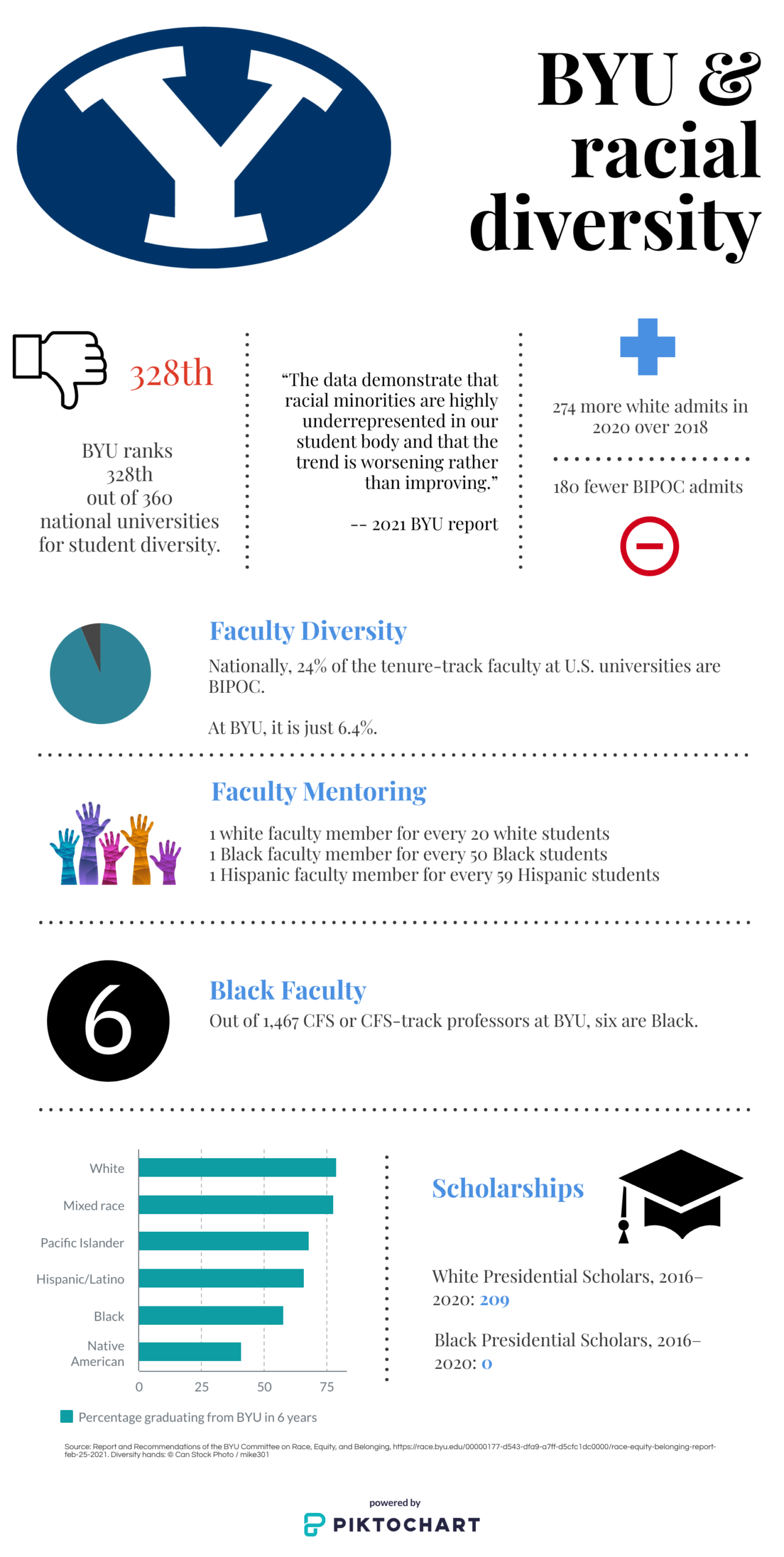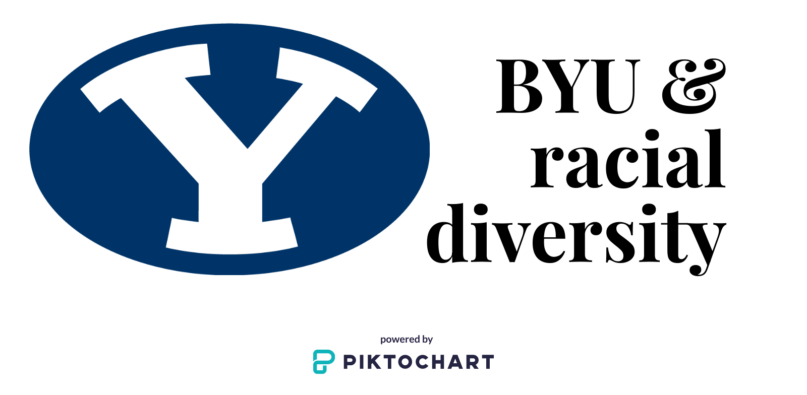(RNS) — Brigham Young University, the flagship school for the Church of Jesus Christ of Latter-day Saints, issued a major report last week indicating that racism and a lack of diversity are problems on campus and that they may be getting worse instead of better.
Before I touch on the report’s main findings, I want to say this: kudos to BYU for initiating this internal study, and especially for making its findings public. Transparency is so important. As a private educational institution, BYU didn’t have to air its dirty laundry for all of us to see, but it has chosen to acknowledge that it has a serious diversity problem.
Unflinching honesty is the first step toward real change. But as the report makes clear, it’s only the beginning of what needs to be a major overhaul of longstanding policies and approaches at the university.
The gist of the report is that “many BIPOC (Black, indigenous and people of color) students at BYU feel isolated and unsafe as a result of their experiences with racism at BYU.” These students are underrepresented in the student body and have few role models in terms of faculty members or administrators of color.
Also, the problem is apparently worsening. For example, the report tracks BYU applicants and admits by race and finds that the rate of admission for white applicants has increased in recent years, while the rate for BIPOC students has declined.
The report draws on statistical data as well as more than 500 responses from people sharing their experiences.

Some of the main findings include:
- BYU is massively behind other universities in terms of racial diversity in its student body. The report cites the 2021 US News & World Report educational rankings on this point. The good news is that BYU ranked 80th among 360 national universities overall. The bad: it was 328th in the category of student diversity (not including international students). And among the nation’s top 100 universities, BYU ranked dead last in the diversity of its student body.
- Racial discrimination is an ongoing reality, with BIPOC students reporting harmful racial interactions in multiple settings on campus, including in the classroom, where some professors “have ignored or even facilitated racially insensitive class discussions.” In particular, students reported that some of the most damaging experiences happened in their required religion classes when sensitive topics like skin color in the Book of Mormon were discussed, or the priesthood and temple ban that was in place in the Church until 1978.
- BYU has too few faculty and staff of color. Nationally, 24% of tenure-track faculty at colleges and universities are people of color; at BYU, it is just 6.4%. In raw numbers, looking specifically at the dearth of Black professors, there are 1,086 white male faculty and four Black male faculty members, and 291 white female and two Black female faculty members. So in a university with 1,467 professors, only six of them are Black.
- What’s more, these few diverse faculty members experience “cultural taxation” because they are expected to do the extra work of mentoring students of color, serving on committees about inclusion and educating “a predominantly White administration and leadership on issues of diversity.” The report goes on to say that there is only one Black faculty member for every 50 Black students and one Hispanic faculty member for every 59 Hispanic students. The ratio for white students is 20-to-1.
- When racist incidents occur, BIPOC students aren’t even sure where and how to report it. There’s no single or centralized process “for reporting, assessing, and resolving grievances regarding racial discrimination experienced by students.”
- BYU’s current “race-neutral” admissions policy “hampers efforts to recruit a diverse applicant pool.” White students are noticeably over-represented in the student body and especially among scholarship recipients. The committee that drafted the report has recommended that BYU revisit this policy, which is privileging white students, and explore the possibility of a “race-conscious” recruitment and admissions policy to develop “a more appropriately diverse pool of applicants.”
- BYU’s on-time graduation rate for BIPOC students is markedly lower than it is for white students. For example, only 41% of Native American and 58% of Black students graduate within six years, versus 79% of white students. (Because of the number of students serving Mormon missions during their college-age years, BYU uses a six-year time frame instead of the usual four or five.)
- Students of color “are charged with Honor Code policy violations at a rate disproportionate to their share of the population,” particularly in relation to the university’s dress and grooming standards. “Ethnic hairstyles” have sometimes been cited as Honor Code violations, but there’s no clearly explained or consistently applied standard of what Black students’ hairstyles can look like, leaving students bewildered and frustrated.
That’s just a sampling of what is in the report, which includes detailed suggestions of measures the university can take to address the problems of racism and lack of diversity. Louise Wheeler, an assistant professor of psychology at BYU, says she hears from students of color several times a week about their negative experiences and that their isolation and alarm are on the rise:
(BIPOC students feel) a lot of stress regarding the rise of alt-right movements (e.g., DezNat) within the university student body. This includes worries about physical safety and worries about things that might be said or done in classrooms, at church, etc. I have heard so much more about (these concerns) this year than in the past. This has led many of the students I have worked with to tell friends and siblings to not attend BYU.
The committee has suggested a number of improvements, which include more actively recruiting BIPOC students and faculty, bolstering support programs to help students graduate on time, requiring racial sensitivity training and mentoring potential future Ph.D. students. There is even a discussion of renaming certain BYU campus buildings; the Abraham Smoot building, for example, is named after a Utah slaveowner. (“Many BIPOC students, alumni, faculty, and community members have noted that the choice to honor someone in this way communicates a value they find hurtful, and they have urged BYU to review the choice,” the report says.)
Many eyes will be on BYU to see what changes it implements to address the problems described in the report.
Related content:
40 years on, most Mormons still believe the racist priesthood/temple ban was God’s will
Mormon apostle’s comments on racism fall short






